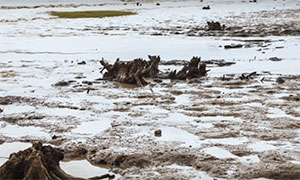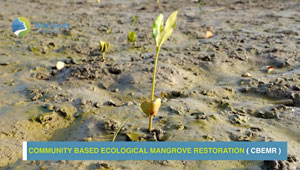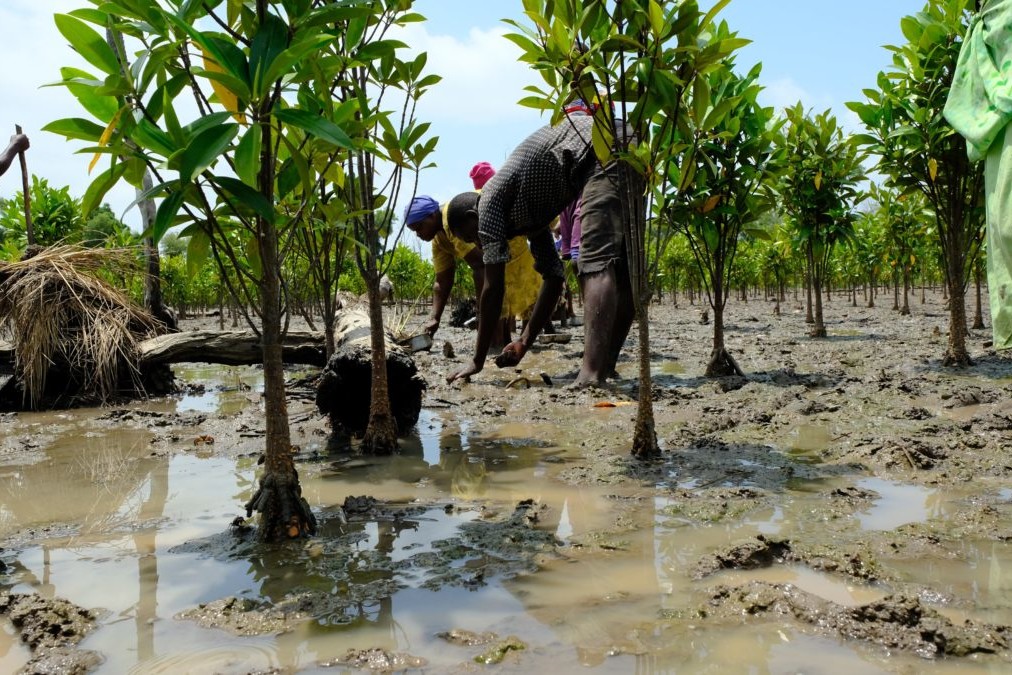|
The MAP News
527th Edition Aug 21, 2021 |
|
|
FEATURED STORY
Loss of mangroves dims the light on firefly populations in Malaysia  MALAYSIA - Every evening, along the banks of the Rembau River in Malaysia, fireflies put on a spectacular display. Against the dark silhouette of the berembang mangroves (Sonneratia caseolaris) they dance, synchronizing their flashing in a bioluminescent performance that draws thousands of tourists every year. In the past decade, however, the light show has somewhat dimmed. As early as 2008, studies on firefly populations in Rembau have revealed significant declines. A confluence of factors has converged to put fireflies at risk of local extinction, and chief among them is habitat loss, a new study has found. Researchers, whose work was published this month in Global Ecology and Conservation, used satellite imagery to monitor changes in land use around Rembau’s mangroves. They found that, between 2002 and 2017, overall mangrove areas had decreased by 17.8% — a loss of 93 hectares (230 acres) of key firefly habitat. According to the study, the top two driving factors behind mangrove loss in Rembau were replacement with oil palm plantations and dryland forests, each of which accounted for a third of mangrove areas lost. READ MORE GLOBAL Scientists detail restorative mangrove and peatland management strategies  GLOBAL - Ensuring the health and longevity of wetland ecosystems will not only benefit the environment and help forestall the negative effects of climate change, but will also boost overall economic wellbeing at local, national and international levels, said Robert Nasi, director general of the Center for International Forestry Research (CIFOR) and managing director of World Agroforestry (ICRAF), during a recent webinar.Aquaculture and other shoreline activities — including urban encroachment — in combination with projected sea level rise caused by global warming, puts the very survival of mangroves at risk, said Daniel Murdiyarso, a principal scientist at CIFOR-ICRAF. “Worldwide, mangroves have been severely degraded and reduced to half of their original amount over the past 50 years,” he said during the event, which attracted more than 275 attendees. READ MORE A functional analysis reveals extremely low redundancy in global mangrove invertebrate fauna  GLOBAL - Global mangrove deforestation and degradation drive the loss of the associated invertebrate fauna vital to ecosystem services. The functional diversity and resilience of this fauna has not been assessed. We show that even small mangrove patches host functionally diverse faunal assemblages and can act as biodiversity reservoirs. However, globally, functional redundancy of mangrove invertebrates (i.e., the average number of species performing a similar functional role in an assemblage) is extremely low, except in Southeast Asia. Thus, even a modest local loss of invertebrate diversity will have significant negative consequences for mangrove functionality and resilience. Current approaches to assess threats to mangroves heavily rely on loss in areal extent, but our results suggest that loss of function may be more vulnerable. READ MORE AFRICA Tanzania’s mangrove wetland at risk  TANZANIA - Mangrove forests around the world face existential threats from human activity and climate change. Tanzania’s Rufiji delta, a once thriving natural mangrove wetland, has not been spared. The mangrove wetland has steadily been hived off for rice farming, illegally logged for fuel and timber, and destroyed by upstream activities such as salt production, human settlement, and cattle grazing. Forestry experts also point to an "invasive" lianas plant species that affects mangrove growth. To mark this year’s World International Wetlands day on July 26, Wetlands International, a non-profit body launched a programme to restore at least 2,000 hectares of mangroves at the Rufiji delta, in line with the government’s pledge to restore 5.2 million hectares of forests across the country over the next decade. READ MORE Ocean health at heart: how communities in Seychelles are driving mangrove rehabilitation 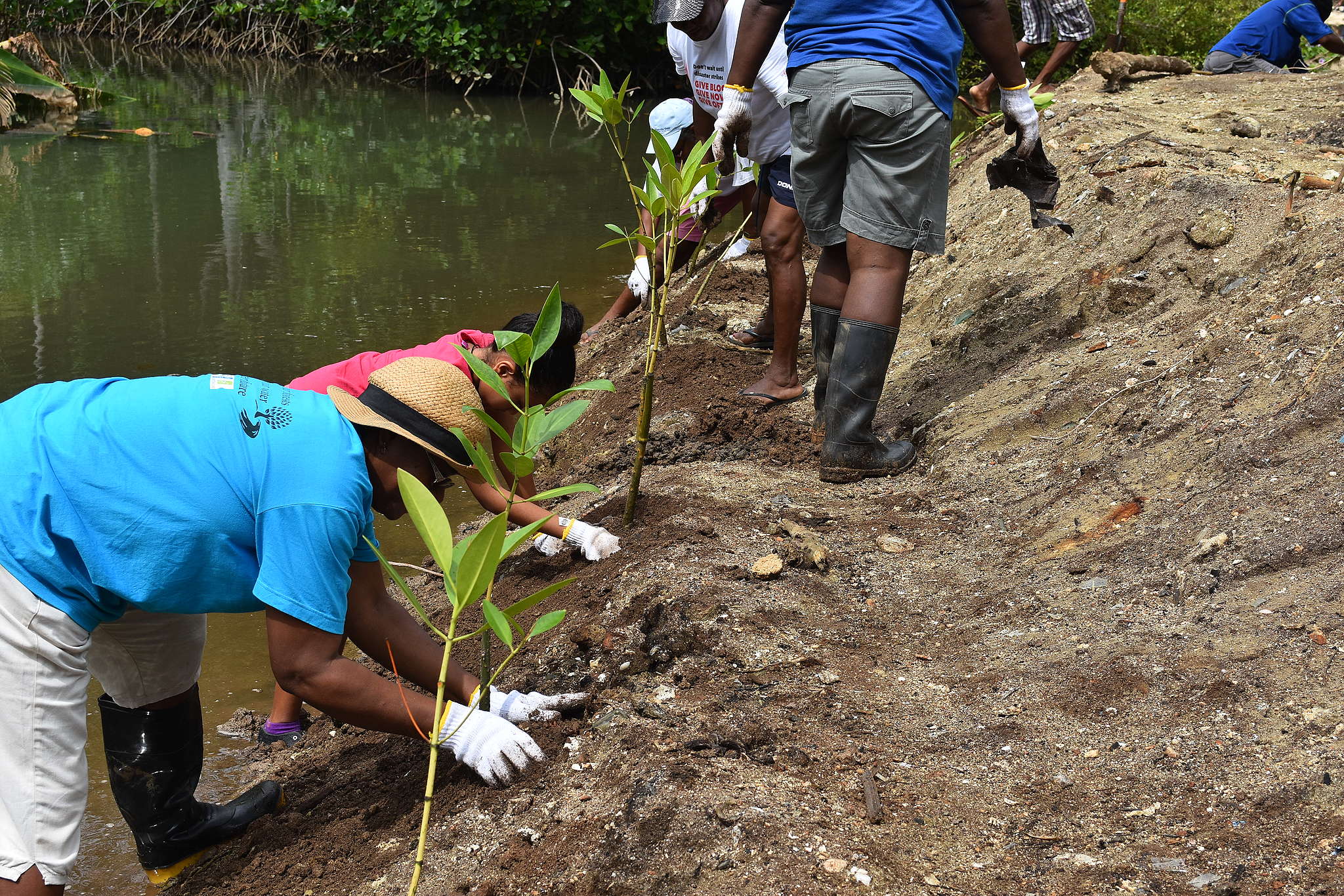 SEYCHELLES - Seychelles is an archipelago of 115 islands located on the east coast of Africa in the Western Indian Ocean. Highly dependent on tourism and fishing as pillars of their economy, Seychelles is a champion of environmental conservation. Wetlands provide many ecosystem services both to the species that rely on them and to the people of Seychelles. They act as filters for pollution and harmful run-off from rainwater – slowing it down and decreasing its erosive ability. Terence Vel and Monica Samson, two of the people very committed to restoring these vital habitats, shared the secrets to their motivation and success with us. “Seychelles’ mangrove forests have seen destruction since the arrival of the first French settlers and it’s sad that some people don’t appreciate the value of this important coastal ecosystem. The Anse Royale wetlands were in a dire state before rehabilitation began; there were only three species of mangroves. Since then, and due to efforts to mimic the composition of the previous forests, there are now six species present,” says Vel. READ MORE Banjul Plants 500 Mangroves, Targeting 5k 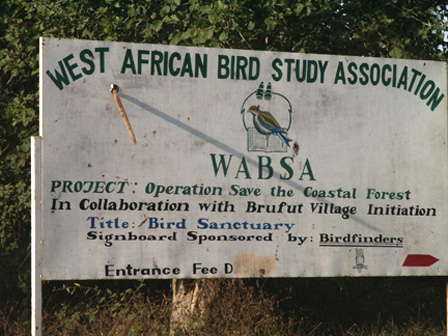 GAMBIA - West African Birds Study Association (WABSA) in collaboration with Banjul residents, on Saturday organised a day-long mangroves planting exercise in order to restore mangroves within the Banjul River and create more space as natural breeding ground for marine species. Alfusainey Gano, project manager for City Link Banjul-Ostend project explained that the 3-year project is funded by the European Union(EU) at an amount of 3.1 million Euros and is under Banjul City Council (BCC). He said that the exercise is one of the project components(greening), adding that part of the overall project framework includestargeting five areas ranging from capacity building, Crab Island, waste management, greening of Banjul and health. READ MORE AMERICAS Trapped Saltwater Caused Mangrove Death After Hurricane Irma  USA - When Hurricane Irma hit southern Florida in September of 2017, the storm buffeted coastal mangrove forests with winds over 116 mph – strong enough to rip off leaves, break branches, and snap tree trunks in half. Of the mangrove forest damaged by Hurricane Irma, about 83% recovered after the first year. But the rest didn’t, leaving scientists wondering why some trees didn’t bounce back. Using NASA data collected before and after Hurricane Irma, researchers found that storm surge and trapped seawater – not wind – ultimately caused the trees to die. Trees survived in places where salty ocean water brought in by the hurricane was able to drain, they write in a paper published June 28 in Nature Communications. But in areas where the saltwater was trapped in low lying areas without enough drainage, the mangroves couldn’t recover. The findings suggest that improving the flow of water near submerged mangroves or flushing them with freshwater could help restore mangroves after a hurricane. READ MORE Nature-based Solutions Needed From Panama’s Coastal Mangroves to Canada’s Boreal Forest  PANAMA - That dynamic juxtaposition of water and land that defines coasts also means that they are typically places of high ecological productivity. Birds, like so many other living things, rely on the richness of life along our coasts for survival. Sandpipers and plovers, ducks and geese, herons and egrets, terns and gulls, and songbirds of every kind—come together in special coastal places, sometimes in the millions, to feed during migration and to nest and raise their young. Yet coastal habitats across the world are also some of the most at-risk systems because humans too are attracted to coasts and what they offer. Mangrove forests in the Bay of Panama compose one of the most important sites for migratory shorebirds in the Americas, with over 2.5 million birds utilizing the area annually alongside over 200 resident bird species. READ MORE Miami’s rare mangrove forests keeping the city afloat  USA - The few mangroves left in Miami, a city at risk of floods due to rising sea levels, are being taken care of for their properties that could save the city from going under water. The trees have become a precious resource that act as barriers against hurricanes and shelters for animals in the endangered keys of Miami. The first weekend of each month, dozens of volunteers come to Virginia Key, an islet in Biscayne Bay, to clean the mangroves of plastic pollutants and objects that get trapped in the entangled vegetation, which acts as a natural sieve. “Mangroves are the most natural systems that exist to filter the waters,” Irela Bagué, responsible for Biscayne Bay, told Efe. Along with other volunteers, Bagué worked for hours knee-deep in water and under the sun to remove 262 pounds of trash from the North Point mangrove on Virginia Key last weekend. Mangroves are not only the habitat of animal species, but also act as a natural barrier against storms and hurricanes as well as absorb carbon dioxide, which is at the root of climate change and rising sea levels. READ MORE ASIA Biodiversity dividend  THAILAND - Making biodiversity an integral part of economic and development strategy can bring a return on investment in economic, social and environmental terms. Southeast Asia, home to at least 60% of the world's tropical peatlands, 42% of all mangroves and 15% of tropical forests, has huge potential to capitalise such investments. Known for its rich biodiversity, Asean could also play a vital role in the global drive for ecosystem restoration and biodiversity conservation, experts say. Asean leaders and multiple stakeholders have committed to scale up their efforts to achieve sustainable development goals and bring about transformative change through innovation. Thailand and Indonesia, for example, have mainstreamed biodiversity, taking it into consideration in their planning for key development sectors, including agriculture, fisheries, energy, manufacturing, infrastructure and tourism. The aim is to identify the factors that drive biodiversity loss and then take action to ensure a more sustainable way forward. READ MORE This Initiative Has Been Saving Mumbai’s Mangroves for Over 3 Decades; Here’s Why It’s Crucial 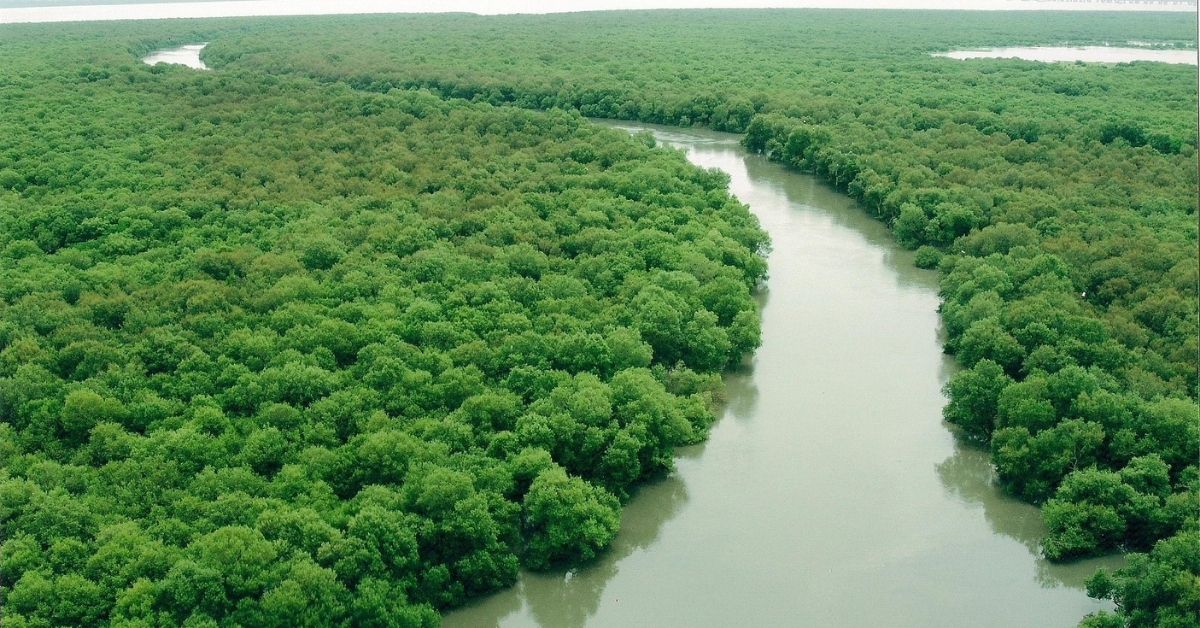 INDIA - To a visitor travelling North toward Thane district from South Mumbai, Vikhroli passes for an ecological oasis amid a stretch of the city’s towering skyscrapers. As soon as you enter the eastern suburb, you will be pleasantly greeted by hundreds of acres of the lesser-known mangroves that man the city’s coastline. Home to several endemic species of flora and fauna, the mangroves are dense coastal forests that are not only essential for maintaining the city’s ecological balance but also a source of income for Mumbai’s traditional fishing community — the Kolis. For generations that have grown up witnessing Mumbai’s picturesque marshlands, estuaries and rivers disappear, the mangroves extending from Vikhroli to the west bank of Thane are a symbol of the city that have thrived and have helped to mitigate the severity of climate catastrophes. In the 1940s, Godrej & Boyce acquired land to set up an Industrial Garden Township for its manufacturing operations and the land was blessed with mangroves along its border. The erstwhile Chairman of the Godrej Group, Sohrabji Godrej and his brother, Naoroji Godrej, had a vision to ensure that nature could co-exist with industries. The Soonabai Pirojsha Godrej Foundation was established in 1985 with the aim of conserving the fragile but life sustaining mangrove ecosystem. READ MORE Mangrove forests: a miracle of nature 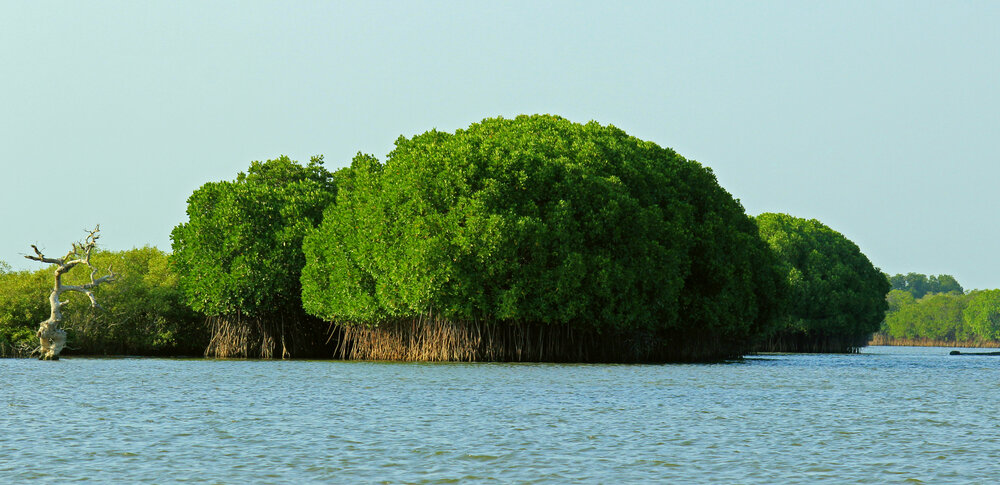 IRAN - Mangrove forests with an area of about 10 million hectares in the world are a safe habitat for thousands of waterfowls, shorebirds, and aquatic species of subtropical regions. However, the influx of polluted water from municipal wastewater, industrial waste, and petroleum products, has threatened the survival of these precious ecosystems and has caused them to shrink more and more. Mangrove forests are able to store about 6 to 8 tons of carbon per hectare of soil per year. Protecting beaches from floods and tsunamis, preventing coastal erosion, supporting the nutrient cycle in water, suitable habitat for plants and animals, producing oxygen due to photosynthesis, providing resin and tannin raw materials, a food source for fish and shrimp, the use of the genes of these trees in biotechnology as genetic resources, medicinal properties, beauty, and natural landscape and tourist attraction are some of the benefits of mangrove forests. These trees are even of spiritual value and sacred to local communities in some countries, but the question is how successful we have been in protecting them. The statistics show that not only were we not successful, but we have also tried hard to destroy the unique habitat. READ MORE EUROPE No silver bullet’ for solving challenge of land restoration  U.K. - Complementary approaches are key to tackling the myriad challenges researchers face in designing tree-based land restoration initiatives. “It’s a real mixed bag,” said Anja Gassner, a scientist at World Agroforestry (ICRAF). “We must juggle data, policy, technical support, local socioeconomics, tree genetic resources, invasive species, gender and equity, and land-use policies for specific local contexts.” Gassner, who leads the ICRAF project Harnessing the Potential of Trees on Farms for Meeting National and Global Biodiversity Targets and is science advisor to the Global Landscapes Forum, spoke at a recent virtual conference hosted by Britain’s Kew Gardens in London. READ MORE |
URGENT ACTION
Stop construction work on a private port In Defense of the Quilombo Boca Do Rio TAKE ACTION! Tell Sumitomo to stop building polluting coal power in Bangladesh! TAKE ACTION! Stop Adaro, Indonesia’s coal giant, from refinance its debt. TAKE ACTION |
|
Mangrove Action Project Click here to view past newsletters
|
|
Search News Archive
Saturday, August 21, 2021
MAP News Issue # 527 - Aug 21, 2021
Saturday, August 7, 2021
MAP News Issue #526 - Aug 7, 2021
|
The MAP News
526th Edition Aug 07, 2021 |
|
|
FEATURED STORY
Help Mangroves Help the Oceans  Dear Friends As we see the effects of the climate and ecological crises beginning to take hold all around the world, mangroves are becoming more vital than ever. From standing as a living barrier against rising seas and more intense storms, to mitigating the causes of climate change (storing up to five times more carbon per hectare than tropical forests), to keeping the oceans healthy by providing nursery grounds and habitats to many marine species and filtering sediments that would otherwise wind up on coral reefs and seagrass beds, mangroves are increasingly imperative to securing our planet's habitable future. Mangrove Action Project is actively working across the globe to help conserve and restore our world's mangrove forests, in partnership with groups ranging from coastal communities to governments, academics, and international NGOs. And this year, MAP has joined with the UN Decade on Ecosystem Restoration in an effort to build a sustainable and healthy future for all. This World Mangrove Day, we are asking for your help to save and restore these vital ecosystems and protect our coastlines, communities and wildlife. By donating to MAP, you are helping to: · Work with coastal communities to bring back and keep their
forests and safeguard their livelihoods · Assist regional, national, and international groups working on mangrove restoration to make their efforts more effective, sustainable, and biodiverse · Educate on and spread awareness of the importance of mangrove forests around the world. MAP is only able to do this work because of our network of support. Thank you for your help, and for spreading the word about mangroves. Please pass on this message, and if you would like to find out more about mangroves and MAP's efforts, visit our website at www.mangroveactionproject.org.
The Mangroove Song
This catchy song was created by The Mangrooves, a group of environmental educators at the Bahamas Reef Environment Educational Foundation's annual teacher training.  GLOBAL Support mangrove conservation, UNESCO chief says  GLOBAL – Audrey Azoulay, Director General of the UN Educational, Scientific and Cultural Organization (UNESCO), made the appeal in her message for the International Day for the Conservation of the Mangrove Ecosystem, observed on 26 July. Mangroves are found in tropical and sub-tropical regions, on the boundary between land and sea. Globally, they cover a surface of just 14.8 million hectares, or roughly equivalent to the size of Greece. “They protect biodiversity by sheltering and nurturing marine life. They function like filtration systems, absorbing nutrients and pollutants. They fight coastal erosion, acting as breakwaters to dissipate storm surges and wave energy. Above all, they play an essential role as carbon sinks, sequestering atmospheric and oceanic carbon for long periods of time,” said Ms. Azoulay. Yet despite these benefits, UNESCO estimated that some countries lost more than 40 per cent of their mangroves between 1980 and 2005, often due to coastal development. READ MORE Many mangrove restorations fail. Is there a better way?  GLOBAL - If any single event was a watershed for conservation of the world's mangrove forests, it was the Indian Ocean tsunami of 2004. In several affected countries, nonprofits and government agencies swiftly began planting mangrove seedlings; in Sri Lanka, plantings were made at more than 20 sites around the island’s rim. But when University of Ruhuna botanist Sunanda Kodikara visited those sites between 2012 and 2014, he was shocked to find mangroves regrowing on only about 20 percent of the area planted. Elsewhere, just a few saplings persevered, or none at all. “I saw so many dead plants,” Kodikara recalls. Especially disheartening, he says, was the fact that some $13 million had been spent on the efforts. Such results are particularly frustrating to experts, as the need for protecting and restoring the world’s “blue forests” is greater than ever. READ MORE AFRICA Mdimni Village Replanting mangroves World Mangrove Day 2021  In celebration of World Mangrove Day on 26 July. We visited Mdimni Village on the banks of the Rufiji River surrounded by mangroves. We celebrated this day in practice in collaboration with these villagers, and we also provided mangrove conservation education including mangrove planting. We spoke to conservation groups in the village and urged them to continue caring for mangroves. And moreover we used the opportunity to point out the importance of mangroves to the environment they live in and the world at large. I offer my sincere thanks to all who supported me in making this a success. READ MORE Tell the banks not to finance the East African Crude Oil Pipeline  EAST AFRICA - French oil giant Total and the China National Offshore Oil Corporation are on the cusp of building a massive crude oil pipeline right through the heart of Africa – displacing communities, endangering wildlife and tipping the world closer to full-blown climate catastrophe. The future of East Africa relies on building sustainable, diversified and inclusive economies – not by letting huge multinational corporations extract resources and keep the profit. The East African Crude Oil Pipeline needs to be stopped and there is a plan to do exactly that. Are you in? READ MORE The fisherwomen, Chevron and the leaking pipe  NIGERIA - Oil companies like Chevron, Shell and Eni have made billions in profits in the vast Niger Delta region in the last decades. But now some are pulling out — and they are leaving utter ruin in their wake, according to government monitors and environmental and human rights organizations. The delicate ecosystem of the Niger Delta, once teeming with plant and animal life, is today one of the most polluted places on the planet. It is the women, who do most of the fishing in the creeks and marshes in this part of the Niger Delta, who are trying to call the oil companies to account. When they found the ominous bubbling, the fisherwomen alerted local leaders, who informed Chevron’s Nigerian subsidiary. At first, Chevron ignored them, the local leaders said, and oil continued to flow through the line. READ MORE ASIA International Day for the Conservation of the Mangrove Ecosystem: Not just a lifeline for coastal communities  INDIA - Mangroves have become highly susceptible to industrial areas along coasts and pollution caused by domestic and industrial sewage. According to UNESCO, mangroves are disappearing at a rate that is three to five times faster than overall losses of global forest cover in the face of infrastructure development, urbanisation and agricultural land conversion. According to its current estimates, mangrove coverage has shrunk by half in the last 40 years. Less than 1% of tropical forests are mangroves, such is its rarity, according to UNESCO. undarbans apart, India is home to several other swathes of mangrove cover, including the Godavari-Krishna Mangroves, Bhitarkanika Mangrove Wetland, Baratang Island in the Andaman and Nicobar Islands, and the Pichavaram Mangrove Forest in Chidambaram. During the 2004 Indian Ocean tsunami, the Pichavaram Mangrove Forest protected several hamlets in Tamil Nadu, by preventing the seawater from entering the villages and minimising loss of property. Rows of mangroves near the sea reduced the impact of the tsunami by reducing the velocity and volume of the tsunami water. READ MORE Mangroves Mitigate Effects of Climate Change Provide Local Economic Benefits  PHILIPPINES - Jurgenne Primavera, a marine scientist and 2005 Pew marine fellow from the Philippines, has spent decades collaborating with local governments and communities to study, restore, protect, and champion mangroves in the Philippines and beyond. “In the Philippines, when my team and I would go to a potential mangrove project site, we would first go to the mayor and local community leaders, because we knew that for mangrove protection to succeed, we would need local support. The local community members are the de facto managers on the ground. And our record over the years, in terms of training and empowering both local communities and local officials to protect remaining mangroves and rehabilitate degraded ones, has been mostly successful,” Primavera said. This interview, timed to mark the International Day for the Conservation of the Mangrove Ecosystem on July 26, has been edited for clarity and length. READ MORE Mangrove Conservation and Restoration: Protecting Indonesia's “Climate Guardians” 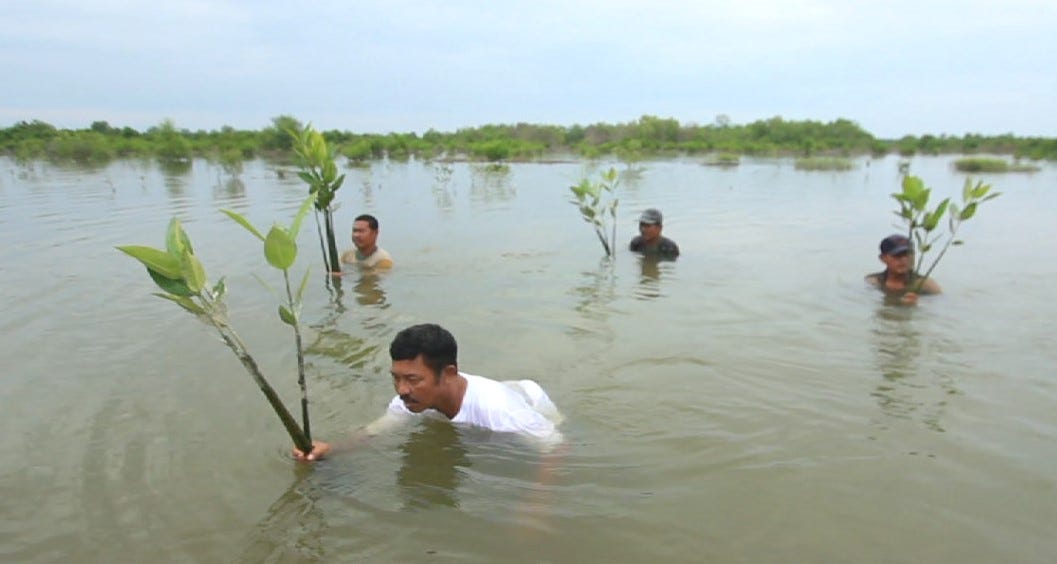 INDONESIA - 'In 2007, my father asked people to join him to plant mangroves, but only a few were interested. Now, we feel the impact of beach abrasion on our daily lives. The sand began to erode, and many of the islands around Yensawai began to disappear,' said Konstantinus Saleo, an advocate for nature preservation in West Yensawai, Raja Ampat Islands, located in the eastern part of Indonesia. For people living in coastal areas, like Konstantinus, mangroves are not just mere plants. Mangroves, which grow on the coastline and river mouths, serve as a barrier to seawater abrasion and reduce the risk of floods. They are the guardians of local homes and livelihoods. These ecosystems provide shoreline protection from climate-related and other disasters such as storms and tsunamis and reduce flood-risks, inundation, and erosion. Indonesia's mangroves also help mitigate the impact of climate change as they store a significant amount of carbon - 3.1 billion tons - equivalent to the greenhouse gas emissions produced by approximately 2.5 billion vehicles driven for one year. READ MORE AMERICAS Cayman Mangrove Festival honours islands’ wetlands on World Mangrove Day  CAYMAN ISLANDS - The Mangrove Arts Festival in celebration of World Mangrove Day and World Mangrove Week, took place July 24 in at downtown gallery Parcel 110 on Cardinall Avenue. The free, all-ages event kicked off a week of activities and marked the one-year anniversary of the Mangrove Rangers, a non-profit dedicated to mangrove conservation, restoration and education. Doors opened at 10am with two mangrove-themed art exhibitions on display until 31 July. These shows included a student exhibit with more than 25 participants from schools across the Cayman Islands. Students were invited by the Mangrove Rangers to submit art of any style reflecting the environmental, cultural or economic value of Cayman’s mangrove habitat. View Video READ MORE Costa Rica Ensures Future for Its Mangrove Forests  COSTA RICA - Costa Rica recently announced its commitment to restore and protect coastal wetlands—including 22,000 hectares of the country’s mangroves—as part of its updated nationally determined contribution (NDC) to the Paris Agreement. Coastal wetlands, including mangrove forests, are some of the most important ecosystems on the planet. Not only are mangrove forests rich in biodiversity, but they serve as natural buffers to storms and flooding. They also help mitigate climate change by storing an estimated three to five times more carbon in their soil per acre than other tropical forests. This interview with two Costa Rican coastal wetlands experts, to mark International Day for the Conservation of the Mangrove Ecosystem on July 26, has been edited for clarity and length. READ MORE |
Stop the East African Pipeline that threatens the planet #STOPEACOP – CLICK HERE
|
|
Mangrove Action Project Click here to view past newsletters
|
|
-
The community of adults and youth in Cayman Islands has come together recently to release a series of educational videos. Each is geared to...
-
By Alfredo Quarto, Program & Policy Director Co-founder, MAP There is a rather urgent situation concerning the bio-invasion of the Son...
-
By: Isabel Robinson, MAP Volunteer Intern Some months ago I decided to come to Thailand and do an internship in mangrove conservation, ...
MAP News Issue #596 = April 20, 2024
ENTRIES NOW OPEN! Mangrove Photography Awards 2024 10 Years Celebrating Mangroves GLOBAL - MAP has launched our 10th Mangrove Photograp...



